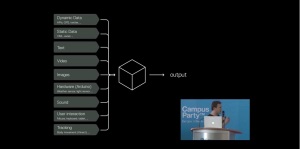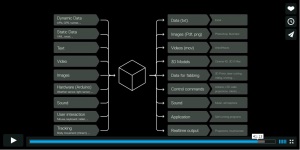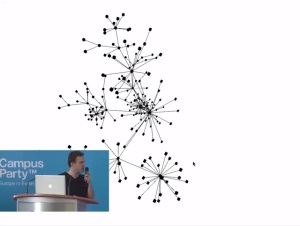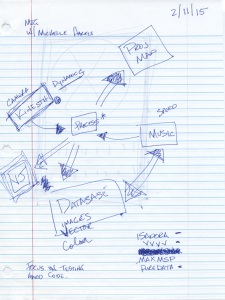The Monomyth or Hero Story
In the development of an interactive environment with any authenticity, it becomes necessary to have a particular point of view. It is imperative for it to express my own life experience, which is not so different from the experience of all people.
One of the benefits of growing older (I will soon celebrate my 42nd year of life on planet Earth) is that you can finally have some perspective on yourself and your past — both the positive and not–so–positive. You begin to see that the tale that we were told of being unique snowflakes is only partly true. At some point, you realize that we are all not so unique and unusual at all. You begin to understand that while the cast of characters, scenery and dialogue may change from person to person, we each play out strangely familiar plot lines in our individual lives.
“The usual hero adventure begins with someone from whom something has been taken, or who feels there is something lacking in the normal experience available or permitted to the members of society. The person then takes off on a series of adventures beyond the ordinary, either to recover what has been lost or to discover some life-giving elixir. It’s usually a cycle, a coming and a returning.”
– Joseph Campbell, The Hero With A Thousand Faces
Aiding me in peeling back that layer of the onion, has been an understanding of the Monomyth (or Hero Story) by Joseph Campbell. Campbell wrote a great deal about the power of myth, and how the Hero Story is written into the most famous of fables, religions and literature. In dissecting these, Cambell explored how these timeless themes have shaped the lives of humans from the beginning of time. Campbell divided the Hero Story into 17 distinct stages which can be grouped into the phases of Departure, Initiation, and Return.
Generative Design
Generative Design is a completely new design system that utilizes modern computer languages such as Processing, vvvv, JavaScript and others to provide a framework for development of unique design systems with opportunities for multiple types of output.
In a 2012 lecture, Cedric Kiefer of onformative gave a brief overview of Generative Design — the captions are my own notes on his presentation:
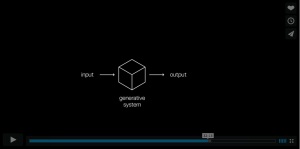
Create a system to process inputs (data, sound, images, vectors, motion, video, etc) into outputs ( other data, sound, images, vectors, motion, video, etc.)

It is even possible to use the output of a generative design system as an input through the system again!
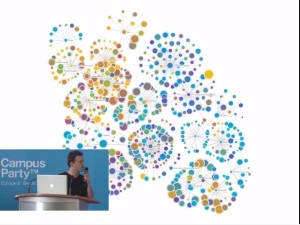
In one example cited by Kiefer, using properties of physics, and data they were able to create a visualization of concept linkages.

They first started with programming the physics and physical properties so that the groups of concepts would “unfold” and not be blocked from view.
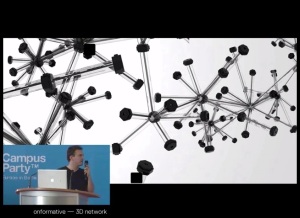
They could then export the data for 3D rendering for other purposes such as motion graphics or film.
The basic idea is that you can create infinite variations of designs by simply changing the inputs or the parameters of the software that will get tremendously different results from very small and simple changes. Those outputs can then be used in many different ways to examine or infer relationships, analyze and develop possibilities, draw conclusions, etc.
It is therefore at the discretion of the designer to create the design system and the manner in which information is processed and how the output is expressed.
Incorporation Into The Thesis Project
In delving into the concept of the Monomyth, it could potentially serve as a backdrop for my thesis presentation. In creating an environment, I could potentially work to develop a “learning tool” through creation of a generative design environment. This would take a participant on a “Hero’s Journey” with accompanying stages. Through gamification, each person could work towards achieving the quest, and along the way learning small lessons, that can be put into practice at various stages of the environment.
With each phase of the game, the graphics would change and provide feedback to the participants of their progress and development. In addition, the challenges would become greater and more difficult as the game progresses.
As with all Monomyths, each individual could be on an individual quest. The lessons of which could be different from others. Ideally, I would like for all participants to understand the value of working together towards a common goal, and experiencing a sense of coming together to achieve a common goal.
